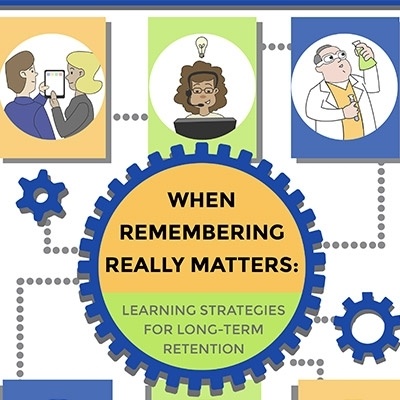Learning and Remembering in Corporate Training
The training department has two primary challenges, and they are related: the challenge of learning and the challenge of remembering. Of course, there are other challenges, too… like meeting the requirements of key stakeholders and making the best use of a limited budget. It turns out that those last two challenges are related as well; learners must perform better on the job after completing training if the training is to have a meaningful business impact.Unfortunately, most corporate learning is not designed based on how people learn best. And once training is delivered, few L&D departments can tell you, with confidence, that employees will remember what they learned. SCORM may mark them as “complete,” but it tells us little else.Sharon Boller, a 20-year veteran in the field of instructional design, has authored a new white paper on the science of learning and remembering. It includes eight proven strategies to improve training’s effectiveness, based on Sharon’s professional experience and research done by Will Thalheimer, John Medina, Karl Kapp, Ruth Clark and others.The eight strategies listed below are all explained in detail in the white paper.Improve remembering with:
- Spaced intervals.
- Multiple repetitions.
- Immediate feedback.
- Narrative story.
And while remembering is important, we can only remember what we once learned. Sharon explains how to improve learning as well.Improve learning with:
- Balanced use of multimedia.
- Designs based on learning principles, not what learners say they want.
- A personalized experience.
- Streamlined content.
When most or all of these strategies are used in a learning solution, the rate of both learning and remembering increase. This means less wasted dollars, better business outcomes, and more internal trust in the L&D function. In the white paper, Sharon includes five real business situations where remembering really mattered… and describes how these eight strategies were used to overcome challenges.Download the white paper, “When Remembering Really Matters: Learning Strategies for Long-Term Retention”.









